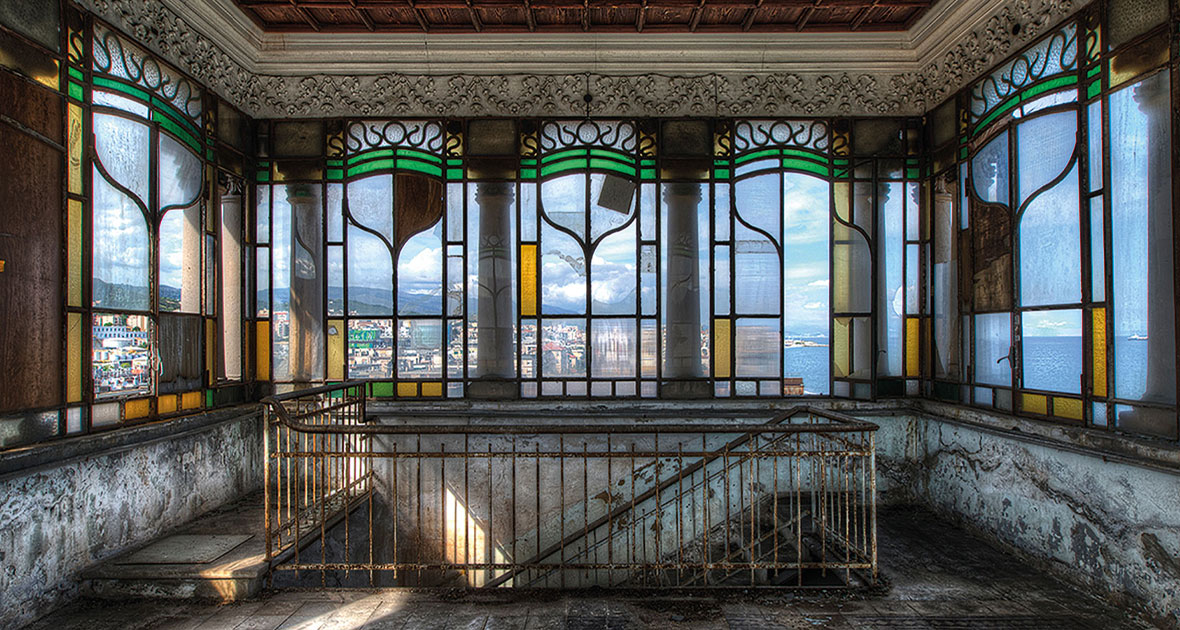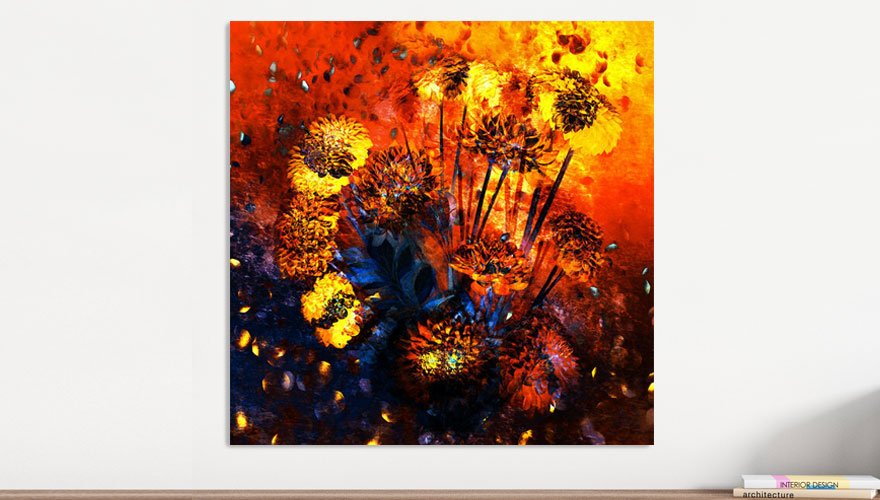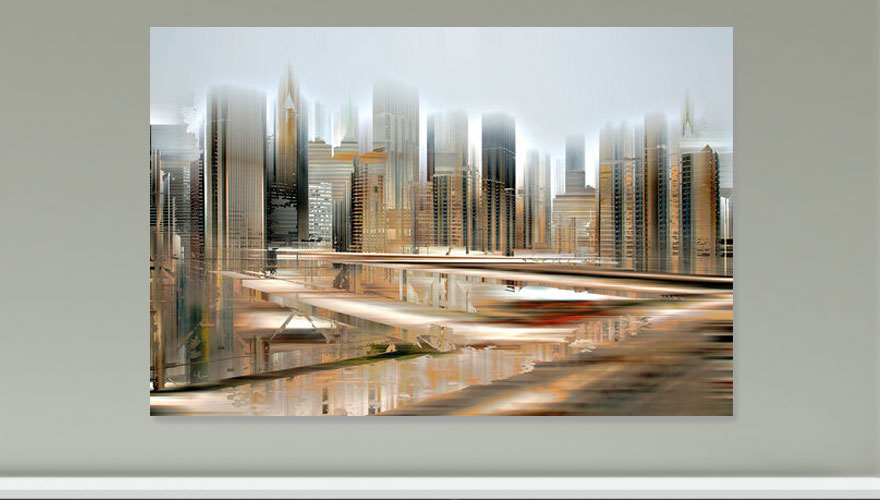
Artistic Photography: The Motif Behind the Picture
Ever since photography was invented in the mid-19th century, countless sub-genres have developed, such as nature photography, scientific photography, black-and-white photography, portrait photography or advertising photography. These genres set different emphases, but all ultimately had the core goal of depicting real objects.
Artistic photography, which developed at the beginning of the 20th century, pursues a different approach. It leaves aside the reproductive aspect of photography and significantly expands the spectrum of what a photograph can do. In the understanding of fine-art photography, the photograph becomes a component of an artistic concept and is intended to convey messages far beyond the content of the image. The photo artists associate a concern with the photo and want to transport values and ideas or question the reality. Thus, the motif behind the picture becomes more important than the photo itself. The photo is transformed into a symbol and thus begins to "create reality".
The highest level of distance from reality is reached by experimental photography, which abandons all conventional traditions, whether the choice of motif or the shooting technique and instead produces fine-art photography that is very abstract in some cases. But in the pictorial themes that serve as the basis for artistic work, fine-art photography is not at all far removed from other forms of fine art. You can find landscapes, portraits, nudes or still lifes here, too. In addition, the self-reflection of the medium is a major focus. Using various means, we question our viewing habits, fundamentally question the image character of photography, and explore the limits of the medium.

Photography as an Artistic Process
In modern photography in general and fine-art photography in particular, simply pressing the camera shutter is not enough. The quality of the photo or the work of art is determined by many different factors that can be influenced by the photo artist beforehand, as well as afterwards. These include, for example, the quality and characteristics of the camera, the general conditions, and parameters of the photographic process, and digital or analogue post-processing.
- The right choice of the camera: Nowadays, there are countless technologies and devices available for taking photos - from pinhole cameras to smartphones to digital SLR cameras. Since these differ significantly in terms of quality, the choice of the camera itself has a significant influence on the final result. Nowadays, digital cameras are probably the most commonly used in the professional sector, for example, an SLR or a system camera. However, smartphones are also increasingly being used for (art) photography thanks to their high-resolution cameras. Analogue cameras such as the legendary Hasselblad medium format cameras continue to have a large following among professional photographers. The light intensity and angle of the lenses are of great importance for all camera models. For example, wide-angle lenses or fish-eye lenses can significantly alter or distort the motif even as the picture is being taken.
- The staging of the motif and the parameters of the photograph: Artistic photography already begins with the choice of the motif and the environment in which it is located. It makes a big difference whether an object is photographed in a white cube or in a landscape. The natural or artificial lighting also determines the atmosphere and thus, the message of the photo. Equally important is the decision of whether to take a coloured photo or a black-and-white photo. Finally, the framing, angle of view, the composition of the picture, exposure and depth of field can turn a documentary photo into an artistic photograph.
- Refining the photo through analogue and digital post-processing: For many photo artists, the real work begins after the photo was taken. Depending on the medium, there are various ways to change the photo afterwards. As early as the beginning of the 20th century, artists began to combine or process photographs with other techniques. They integrated the photos into collages and cut, pasted over or painted over them. Digital photography offers an almost endless choice of possible processing variants. With computer-assisted image editing programmes, photos can be manipulated in almost every conceivable way. In the form of high-resolution prints, these digital products can then be presented again in an analogue form.
So, there are many different factors that can be used to influence the photographic process. But technology is only a tool - the artistic idea, a message or a concept must be developed by the artist beforehand.

Artistic Photography Struggled for a Long Time to Maintain Its Status
In today's art world, modern photography is indisputably recognised as a major contribution to the visual arts. Museums and galleries around the world are dedicated to fine-art photography in exhibitions, art schools offer relevant courses of study, and photographs are also increasingly offered for sale at auctions. Artistic photography has also arrived in the collections of the world's largest museums, for example in the MoMa, New York, the Whitney Museum of American Art, New York, the Musée d'Orsay, Paris, the Museum Folkwang, Essen or the Museum für Fotografie, Berlin.
However, photography had to struggle for a long time to establish itself as an equal form of artistic expression. When it was invented and further developed in the mid-19th century, it initially served only to depict reality. But already at the beginning of the 20th century, the Dadaists began to experiment with photographs or the photographic process. However, photography did not enter art museums until the middle of the 20th century. There was a long debate about the artistic merits of photography and whether photographs could be considered works of art according to conventional standards.
Since this "modern" form of image production was fundamentally different from painting and sculpture, the conventional categories for art no longer applied. The discussions revolved (and still do to some extent) essentially around how much craftsmanship and creativity is involved in fine-art photography and how unique pieces can be defined.
Photography vs Painting and Sculpture: New Standards for Art
Until the end of the 19th century, the artistic achievement was defined by the size of creativity and craftsmanship. Artists claimed to create an individual interpretation of reality in paintings and sculptures.
For abstract fine-art photography from the 20th century onwards, there were even no templates at all, but they were completely free-associated and literally created out of nothing. This intellectual creative process was initially denied to photography with the argument that it simply reproduced reality one-to-one. No artistic skills were needed to capture an existing object on celluloid. The same applies to craftsmanship.
Painting and sculpture require years of practice and training and demand talents both in handling brush and chisel and in abstract and spatial thinking. However, photography produces the work itself through mechanics and technology and is therefore not comparable to "fine" art. Today, we are far beyond these resentments. In addition to technical skills, the creative achievement of photographic artists is now recognised, because it is unmistakable that, for example, the choice of motif, the composition of the image, the staging or the post-processing requires a great deal of skill and knowledge.
For a long time, the uniqueness of a work of art was regarded as a further criterion. By its very nature, photography lacks the unique piece character because theoretically, you can make an endless number of prints from a photograph. But nowadays, the worry of arbitrary duplication is completely groundless. With editions, limitations, and control of the number of prints, a form of rarity can be created in photography as well.
Fine-Art Photography on the Art Market
Numerous artists have already made a name for themselves worldwide with their photographs. Famous artists of artistic photography are, for example, Helmut Newton, Anton Corbijn, Peter Lindbergh, Cindy Sherman, Jeff Wall, Andreas Gursky, Barbara Klemm, Edward Ruscha, Candida Höfer, Bernd and Hilla Becher or Man Ray. But even though photography is now established as a component of the fine arts, it still lags behind painting and sculpture on the art market. Most photographers are still miles away from the fame and, above all, the income or auction proceeds of their colleagues in painting and sculpture.
As always, exceptions prove the rule. In 2011, for example, Christie's auction house in New York sold a photograph by Andreas Gursky for the record sum of 4.3 million US dollars. This at least confirms the growing interest in photography and its relevance to the visual arts.
